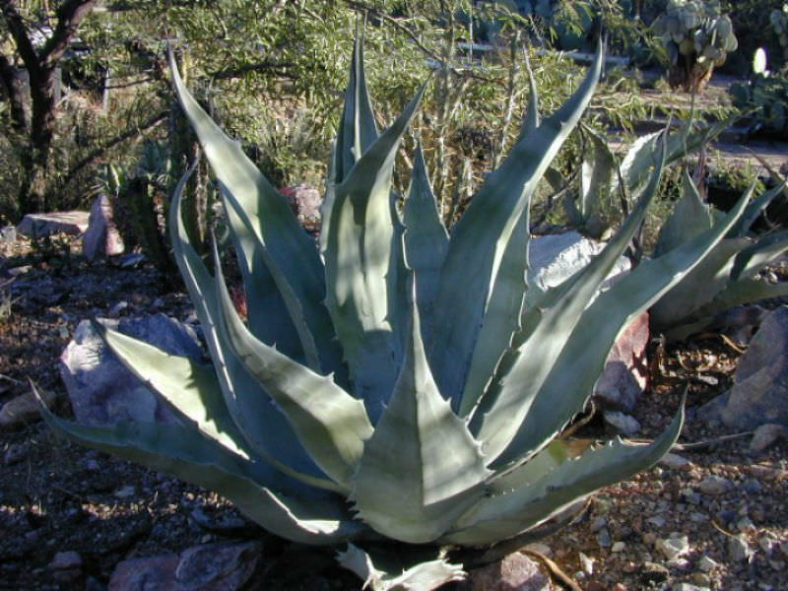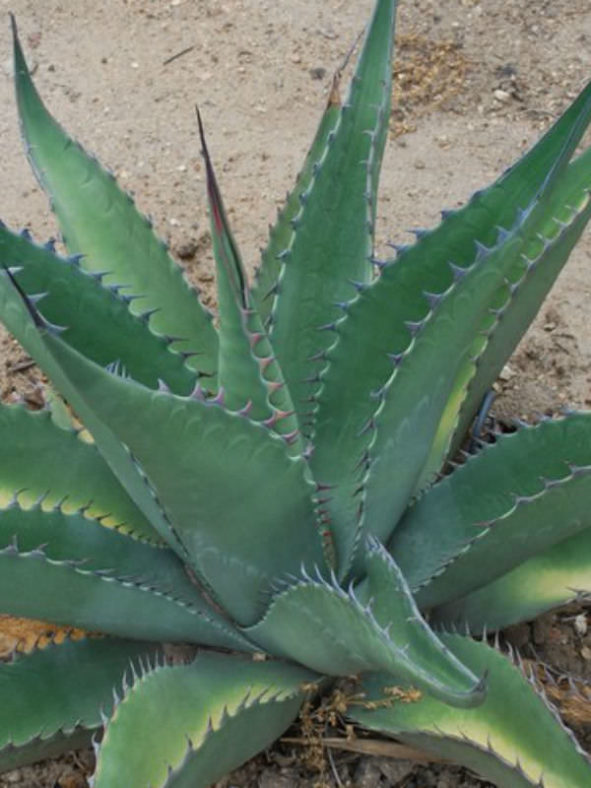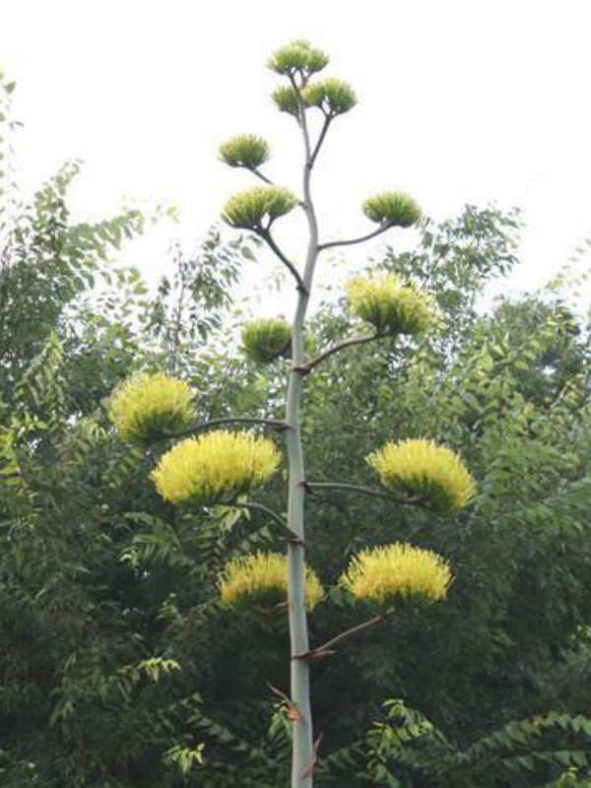Scientific Name
Agave asperrima Jacobi
Common Name(s)
Rough Agave, Rough Century Plant, Rough Leaved Agave
Synonym(s)
Agave asperrima subsp. asperrima
Due to taxonomic confusion resulting from the inclusion of ×Mangave (there was a plant that used to be called Manfreda scabra) in the genus Agave, the plant formerly known as Agave scabra has been given the name Agave asperrima.
Scientific Classification
Family: Asparagaceae
Subfamily: Agavoideae
Genus: Agave
Etymology
The specific epithet "asperrima" (pronounced "as-PER-rim-uh") means "roughest, most uneven, coarsest" and refers to the sandpaper-like texture of the leaf surface of this species.
Origin
Agave asperrima is native to the southwest United States (Texas) and Mexico.
Description
Agave asperrima is a succulent plant that forms rosettes of blue-gray, deeply channeled leaves lined with sharp teeth and tipped with a long, dark brown spine. The rosettes can grow up to 3.3 feet (1 m) tall and 6.6 feet (2 m) in diameter, while the leaves can measure up to 3 feet (90 cm) in length and 7.2 inches (18 cm) in width.
The mature rosette produces a spike with peduncles each bearing many bright yellow flowers. The flower spike can grow up to 20 feet (6 m) tall. The plant is monocarpic, meaning the rosette dies after flowering but produces numerous offsets during its lifetime.
Hybrids

Hardiness
USDA hardiness zone 9a to 11b: from 20 °F (−6.7 °C) to 50 °F (+10 °C).
How to Grow and Care
Agave is not a difficult plant to grow. They're slow-growing and dramatic and will even thrive on a bit of neglect. If you're the type of person who likes to fuss with houseplants and water a lot, Agave is probably not the plant for you. On the other hand, if you're the type of person who likes to set it and forget it, and you have a sunny window, Agave might be the way to go. Be aware that some large varieties will eventually outgrow your room (unless you have a large greenhouse), and Agave can be aggressive. They have irritating sap and sometimes very sharp thorns that can injure small children and even pets.
Generally, Agaves do not require repotting every year. Most species commonly found in cultivation grow very slowly and take a considerable amount of time to outgrow their pot. It's also best to handle your Agave as little as possible since they do not like to be disturbed. When repot, refresh the spent soil with a new potting mix and ensure the plant is firmly anchored in its pot. However, be careful not to pot the Agave too deep, as that will encourage stem rot during the growing season.
See more at How to Grow and Care for Agave.
Links
- Back to genus Agave
- Succupedia: Browse succulents by Scientific Name, Common Name, Genus, Family, USDA Hardiness Zone, Origin, or cacti by Genus
Photo Gallery
Click on a photo to see a larger version.

